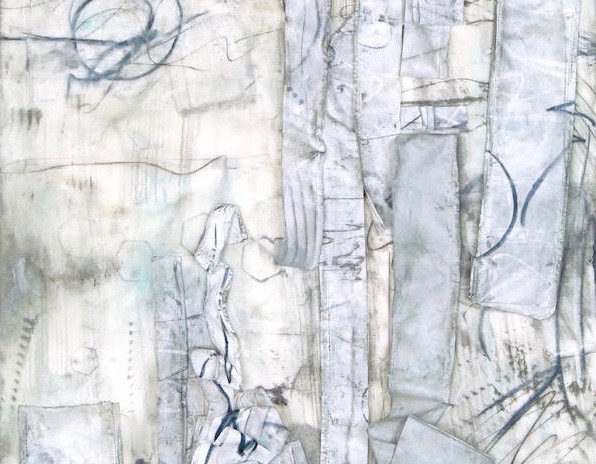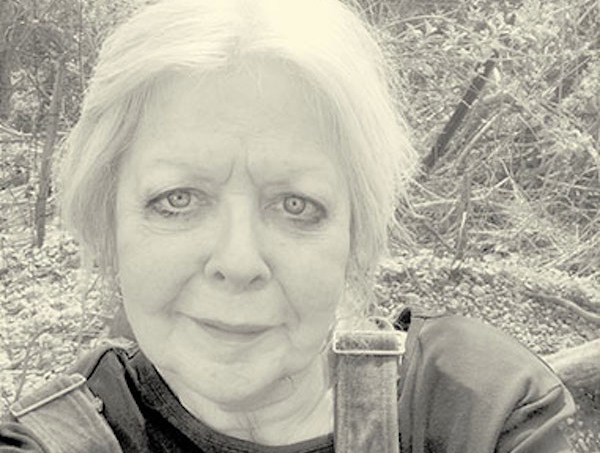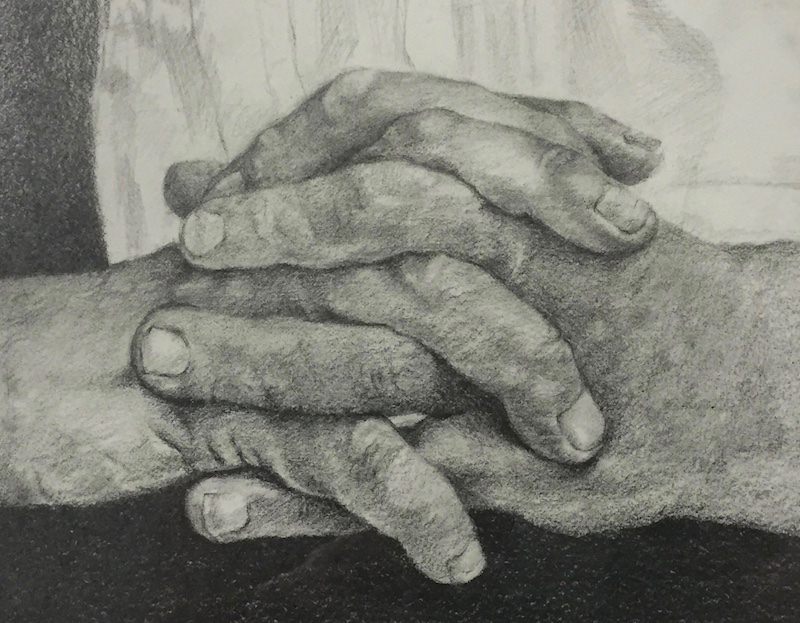
At what age did you decide to become an artist?
I always liked art and making things as a kid, but I had no idea that you could grow up to be an artist. I imagined that I would do something “creative-ish,” like graphic design. The summer after my sophomore year in college, I had an internship at an advertising agency. I also had a studio in the art building on campus that I was able to keep using over the summer. I would go there after I finished work and paint on my own. Experiencing the difference between how I felt in those two places was a revelation. The excitement and aliveness I felt in the studio were such a contrast to the feelings of boredom and confinement I had in a corporate office. That was when I understood that art was going to be my life’s pursuit.
How did your parents react when you told them you wanted to be an artist?
They were skeptical. But I also told them that I’d figure out a way to support myself, which I did—first by doing web design and later by teaching. Over the years, as they’ve seen my painting career grow, that skepticism had turned into admiration and pride.
Who are your favorite artists?
Agnes Martin, Jake Bertot, and Andrew Forge have been three of my most important touchstones for many years. They each developed a personal language of abstraction that also maintained a connection to the natural world. I see their work as combining strength of structure with tenderness of emotion. These elements all have resonance for me and are qualities I strive for in my own work.

Who is your favorite artist whose work is unlike your own?
Art book you cannot live without?
The Shape of a Pocket by John Berger.
What is the quality you most admire in an artist?
Commitment to a personal vision that continually evolves through the work.
Do you keep a sketchbook?
Yes, I’m always drawing alongside my paintings. My sketchbook contains mostly diagrammatic pencil drawings that explore different possibilities for the structures of the paintings. I experience drawing as a way of thinking without words.
What’s your favorite museum in all the world?
There are so many amazing ones I haven’t been to (yet!) but of the ones I have seen, I’d say The Met in NYC and the Museo Morandi in Bologna.
What’s the best exhibition you have ever attended?
When I was an undergrad at the University of Pennsylvania, there was a Cézanne retrospective at the Philadelphia Museum of Art. All these years later, it still stands out as one of the most moving exhibits I’ve ever seen. The evolution of his work helped me understand what the trajectory of life as an artist might look like — what it means to spend your whole life doggedly chasing an idea through paint, and how by doing that the work keeps opening up.
If you were not an artist, what would you be?
I wish I could say chef, but more realistically I’d be a computer programmer, since I gravitate towards a particular way of thinking that combines logic and creativity, and I’m interested in recombining repeating variables in new ways.
Did you have an artistic cohort that influenced your early creative development?
My years in graduate school at the University of Washington were very formative, and my classmates from that time are still some of my closest friends and the ones I trust most to talk about my work with.

What is one thing you didn’t learn in art school that you wish you had?
I wish I had taken more classes in materials and processes other than painting while those resources were available.
What work of art have you looked at most and why?
There’s a Rembrandt self-portrait at the Met that I’ve been looking at since high school. I visit it whenever I’m at the museum, to look into those eyes that seem to carry both the wisdom and the weight of the world. The brushstrokes are at once paint and flesh, embracing and transcending their materiality — and when I sit in front of the painting for long enough, I almost feel like I’m talking to Rembrandt himself.
What is your secret visual pleasure outside of art?
Maybe not such a secret, but I love looking at nature, its colors and forms.
Do you listen to music in your studio?
I used to listen to both music and podcasts in the studio but realized a few years ago that I concentrate and work better when I’m not listening to anything. So now I mostly work in quiet, and only put on headphones with music if there’s something noisy going on in my studio building that I want to block out.
What is the last gallery you visited?
I just saw the Brice Marden show Let the painting make you at Gagosian.
Who is an underrated artist people should be looking at?
My good friend Mia Pearlman makes incredible sculptures, installations, and public art projects. One of her recent pieces, DIGEST, is an interactive monumental sculpture dealing with the prison industrial complex, made in collaboration with jazz pianist Albert Marques and prison inmate Keith Lamar. I wish this work were receiving more attention.
What art materials can you not live without?
Oil paint!
Do you paint/sculpt/create art every day?
This changes based on work and family obligations. Right now I feel lucky that I’m able to be in the studio four or five days a week.
What is the longest time you went without creating art?
At the beginning of the pandemic I wasn’t able to go to my studio for about four months. When I finally got back there, I was exploding with ideas and the need to get them onto canvas. That sense of urgency has been with me in the studio ever since.
What do you do when you are feeling uninspired?
I don’t put much stock in inspiration. There are many days that I work in the studio and feel like I’m plodding along, without being particularly inspired. Sometimes, through painting, I’ll start to feel that spark again, sometimes not. For the times that I am really blocked and can’t work at all, a change of scenery is usually a good idea – I’ll go for a long walk or drive with no particular destination, just to clear my head and look at the world.
What are the questions that drive your work?
How can my paintings capture the physical and phenomenological sensations of being in nature, without necessarily looking like any particular place? How do I balance geometry, structure, order, and planning with color, space, randomness, and intuition? How can I make the forest and walk through it at the same time?
What is the most important quality in an artist?
Persistence.
What is something you haven’t yet achieved in art?
I often think that freedom is the final and most elusive ingredient in making art. When you shake off the outer voices as well as the self-imposed rules, and listen only to the work you’re making. My sense is that this kind of freedom comes with age, after many years of working. I’ve caught glimpses of it, but haven’t yet achieved it in any kind of sustained way.
What is the best thing about art in the era of social media?
Being able to see the work of so many different artists from all over the world. And the ability to make connections with artists I never would have met otherwise.
RACHAEL WREN (@rachaelwren) will teach the two-day workshop Moving Towards Abstraction, March 23 and 24, 2024, at the Art Students League of New York.




